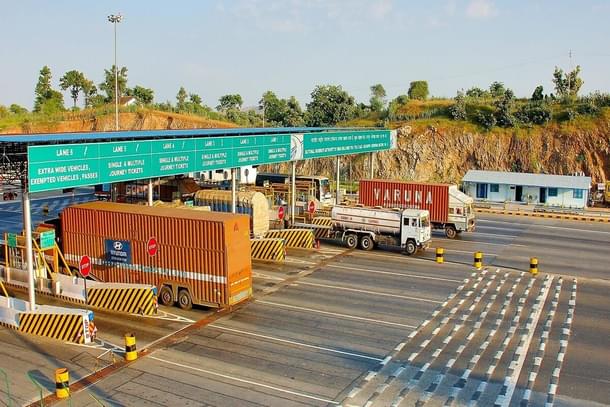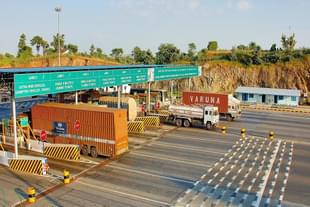Infrastructure
Satellite-Based Tolling Takes Off: Government Promises Toll-Free 20 Km Commute On Highways
V Bhagya Subhashini
Sep 11, 2024, 02:44 PM | Updated 03:28 PM IST
Save & read from anywhere!
Bookmark stories for easy access on any device or the Swarajya app.


Motorists with vehicles equipped with a functional Global Navigation Satellite System (GNSS) will be able to travel toll-free on highways and expressways for up to 20 kilometres daily.
This move is a part of the National Highways Fee (Determination of Rates and Collection) Amendment Rules, 2024, issued by the Ministry of Road Transport and Highways (MoRTH).
Under the new regulations, vehicles using the GNSS-based system will enjoy zero user fees for the first 20 kilometres of their journey every day. If the distance travelled exceeds this limit, tolls will be charged based on the actual distance travelled. The rules also stipulate that vehicles entering exclusive GNSS lanes without a valid GNSS device will incur a fee twice the usual toll rate.
The ministry had previously announced a pilot implementation of the GNSS-based toll collection system on selected national highways. Notable pilot projects were conducted on the Bengaluru-Mysore section of NH-275 in Karnataka and the Panipat-Hisar section of NH-709 in Haryana.
Union Road Transport and Highways Minister Nitin Gadkari stated that the GNSS-based system, which will operate alongside the existing FASTag system, is designed to enhance the tolling experience. The hybrid model will initially use both RFID-based and GNSS-based electronic toll collection (ETC) methods, reports Economic Times.
How GNSS-based tolling works
The GNSS-based tolling system employs virtual toll booths to track vehicles entering and exiting tolled sections. Virtual gantries installed along the tolled road network interact with GNSS-enabled vehicles, removing the need for physical gantries.
These devices collect essential vehicle information, including registration number, type, and bank account details. As a vehicle passes through a virtual toll booth, the system automatically triggers tolling and deducts the appropriate amount from the user's account.
Dedicated GNSS lanes will be established at toll plazas to facilitate smooth passage for vehicles utilising the GNSS-based ETC. The Expression of Interest (EoI) seeks experienced and capable companies to develop robust toll charger software, crucial for the successful nationwide implementation of the GNSS-based ETC.
What are the advantages?
The new GNSS-based system aims to streamline vehicle movement on national highways by providing barrier-less, free-flow tolling. It is expected to offer a seamless travel experience and ensure more efficient toll collection, reducing revenue leakages and addressing toll evasion.
GNSS-based tolling allows for various charging schemes such as distance-based, time-based, or congestion-based tolling. This flexibility ensures a fair and efficient toll collection system tailored to different road users' needs.
Compared to traditional toll plazas, GNSS-based tolling systems reduce the need for extensive roadside infrastructure. Virtual toll booths eliminate physical structures, resulting in cost savings and easier maintenance.
V Bhagya Subhashini is a staff writer at Swarajya. She tracks infrastructure developments.





